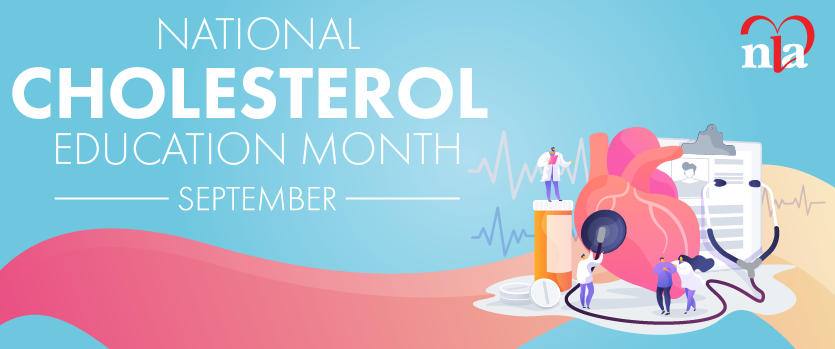In October 2018, the American College of Cardiology (ACC) and the American Heart Association (AHA), in collaboration with the National Lipid Association and other organizations, published evidencebased guidelines on the treatment of blood cholesterol to reduce atherosclerotic cardiovascular disease (ASCVD).(1) Along with the guidelines, there was a special report summarizing the rationale and evidence base for the current quantitative risk assessment tools.(2) These newest iterations strengthen recommendations on lifestyle modifications, provide lowdensity lipoprotein cholesterol (LDL-C) thresholds for non-statin therapies (such as proprotein convertase subtilisin-kexin type 9 inhibitors) in high-risk and very high-risk groups and lists “risk-enhancing” comorbidities to help personalize treatment decisions in borderline (10-year ASCVD risk of 5%-7.5%) and intermediate (10-year ASCVD risk of >7.5%-20%) risk groups. Notably, the guidelines formalize the use of coronary artery calcium scoring (CAC) as a decision tool for the intermediate 10-year risk group. Given the decades of data supporting CAC as a reliable means of improving risk assessment scores for cardiovascular outcomes(3), the thoughtful inclusion of CAC in the guidelines merits commendation.
In preventive cardiology, we treat patients based on risk, such that higher-risk patients receive more aggressive interventions. In patients with known clinical atherosclerotic disease, diabetes or genetic dyslipidemias, the risk is high enough to qualify for pharmacotherapy (i.e., statins) and nonstatins are considered when LDL-C is above treatment thresholds. On the other hand, care for primary-prevention adults without severe hypercholesterolemia and diabetes is more nuanced and starts with assessment of patient preference in a thoughtful clinician-patient discussion. We rely first on risk calculators. By their very nature, quantitative 10-year risk assessment scores are based on large-scale population studies. These tools define a distribution of risk for a given patient based on several broad characteristics (age, sex, race, blood pressure, total/ low-density and high-density lipoprotein cholesterol, presence of diabetes, smoking and antihypertensive medication status and use of statins and/or aspirin). For patients at high risk because of their calculated scores or presence of enhancing risk factors, statin therapy is favored. In the borderline and intermediate groups, the distribution of risk becomes much more clinically relevant. CAC measurements have proven superior to serum biomarkers and traditional risk factors for refining risk of ASCVD.(4) Adding CAC measurements to risk assessment tools improves both the precision and accuracy of risk assessment by personalizing the decision-making to an individual’s personal burden of disease. Subclinical atherosclerosis imaging reflects a lifetime of known and unknown risk factors. CAC scoring may reclassify an individual into a higher or lower risk stratum,(5) clarifying the role of statin therapy.
The group specifically mentioned in the guidelines as most likely to benefit from CAC scoring is intermediate-risk patients between 40 and 75 years of age in whom the decision to treat is uncertain. For intermediate-risk patients with a CAC score of >100 Agatston units (AU) or >75th percentile for age/sex/race/ethnicity, event rates occur in a range where statin therapy clearly exceeds potential for harm, resulting in the so-called “up-risking” of these patients. CAC scores between 1 and 99 AU and <75th percentile for age/sex/ race/ethnicity result in only modest-risk reclassification rates. While the guidelines favor treatment on patients above 55 years in this category, we believe this is too limiting, because, in adults less than 55 years of age, any non-zero score carries significant 10-year and lifetime cardiac risk. (6)
Intermediate-risk patients with a CAC score of 0 AU appear to have 10-year event rates <5%, suggesting drug therapy would likely be of limited value.(7) As the guidelines point out, clinicians should not down-risk patients who are persistent cigarette smokers, have diabetes mellitus, have a strong family history of ASCVD or have chronic inflammatory conditions whose CAC of zero does not rule out risk from noncalcified plaque.(1) Overall, we appreciate the effort from the guideline committee to correctly risk stratify intermediate-risk patients, but we typically recommend CAC for down-risking only if the patient is actively trying to avoid medications or if there is a history of significant statin intolerance. Given the favorable risk-to-benefit profile of statins(8), we believe the greatest benefit of CAC is to up-risk patients so they might be protected from statin initiation. The guidelines highlight that, if a decision is made not to treat with a statin, repeating CAC at five to 10 years could be considered. Conversion from a CAC of zero to greater than zero is non-linear. Careful surveillance is prudent, because as many as 25% of zero CAC scores will convert to non-zero scores by four years.(9) Our recommendation is to rescreen non-treated patients every five years, the earlier portion of the range suggested by the guidelines.
While CAC scoring may reclassify some subgroups of patients with borderline ASCVD risk scores, the data is less robust than for those with intermediate risk. (3) For borderline-risk patients, the new guidelines suggest screening for riskenhancing factors prior to considering CAC scoring. By selecting the borderline-risk patients with risk-enhancers, the hope is that this approach is more likely to identify patients in whom a CAC score may “up-risk” the patient. Two other groups mentioned as possibly benefiting from CAC included low-risk women (10-year risk of ASCVD <5%) with a strong family history of premature ASCVD and patients less than 45 years of age with significant and sustained risk factors through young adulthood but low or borderline 10-year risk.(2,6,10) Particularly in these two younger cohorts, a CAC score of >0 AU was associated with ASCVD event rates in the range of statin benefit.(6)
While we agree with the consideration of borderline, and some low-risk, populations for CAC scores, we wish this suggestion was stronger and more widely applied. The group most likely not to be prescribed a statin despite probable benefit from therapy are members of the low 10-year risk group with non-zero CAC scores. A study by Nasir, et al., found that 21% of patients with only one traditional risk factor had non-zero coronary calcium scores and 4% of the low 10-year risk cohort had CAC scores >100 AU.(5) Adults younger than 50 years old with any CAC, even with very low CAC scores, are at a three- to fivefold increase of risk for cardiovascular events compared to similar cohorts with CAC scores of 0.(11) Given the prevalence of non-zero scores in the low 10-year risk group, guidelines should encourage clinicians to screen for risk-enhancers in all patients. If any are found, especially a family history of heart disease, the guidelines should encourage consideration of CAC scoring to avoid missing patients in whom treatment is warranted. While the prevalence of non-zero scores will be lower in this group, the area in which we can provide the most benefit to a patient is to identify cardiovascular risk that the patient did not realize he or she had, and thus intervene and lower lifetime risk with intensive lifestyle modification and proven pharmacologic therapies that are safe and effective.
As with previous versions of the guidelines, a large emphasis is placed on 10-year risk for clinical decision making. As the obesity epidemic has more impact on younger generations, it will become more important to consider not just 10-year but lifetime risk. At least half of the U.S. adult population has a 10-year risk of ASCVD < 10% with a lifetime risk of ASCVD > 39%.(12) As such, the guidelines note that simultaneous assessment of 10-year and lifetime risk is “reasonable” for decisionmaking purposes. While shared decisionmaking is admirable, having clear guideline recommendations for disparate 10-year and lifetime risk scores will help alleviate some of the strain on a primary care system that already is stretched quite thin. In this area, subclinical atherosclerosis imaging also may be useful.
When considering younger populations and lifetime risk, CAC is less useful because of the decreased prevalence of coronary artery calcification below age 40. In these patients, we advocate for use of carotid intimal media thickness (CIMT) testing. While CAC has greater prognostic power and CIMT ultrasonography is controversial, CIMT can provide valuable guidance in appropriate younger populations, female populations and populations with unique risk factors such as previous neck radiation therapy.(13) CIMT is briefly mentioned in the current guidelines as a “weaker predictor of overall ASCVD events compared with the CAC score.” But CIMT may be more useful in younger populations where many of the patients with high lifetime risk may have zero or near-zero CAC scores.(14) CAC and CIMT may be complementary as predictive tools, with the soft plaque visualized on a carotid ultrasound potentially complementing the calcified plaque detected by CAC. CIMT also may have more ability to predict cerebrovascular events.(13) Given the large benefit realized by preventing premature ASCVD at a young age, CIMT is reasonable when assessing risk in young patients with low or borderline 10-year risk scores but with risk-enhancers or high lifetime risk.
Most insurance companies do not cover CAC testing, which is explicitly mentioned in the current guidelines. Given the new emphasis from these preeminent cardiology societies on CAC in medical decision-making, there may be renewed pressure on insurers to cover these tests. The guidelines also address two other pragmatics issues brought up by CAC scores. Firstly, the radiation of a CAC score is small, at 1 millisievert, or roughly 1/3 of the amount of background radiation absorbed in a year.(15) Secondly, discovery of incidentalomas can be minimized by narrowly windowing around the heart.(1)
CAC is a reliable means of improving risk assessment scores for cardiovascular outcomes.(3) Including this powerful subclinical atherosclerosis imaging modality in the latest guidelines should improve the cardiovascular health of millions of Americans, particularly those with intermediate 10-year risk scores or borderline 10-year risk scores but with risk-enhancers. Overall, we agree with the committee’s interpretation of CAC scores. We do hope that providers use CAC scores more broadly in the lower-risk and borderline-risk patients with risk enhancers to up-risk appropriate patients into a statin treatment group, thereby avoiding missed opportunities to lower risk in patients before they develop cardiovascular events. We also hope that patients with nonzero scores receive treatment with statin therapy, and that patients with zero scores not on statin therapy receive surveillance scans at approximately five-year intervals to justify remaining off treatment. Hopefully more data continues to become available, leading to further refinement in future guidelines.
Disclosure Statement: Dr. Jacoby has received honoraria from Regeneron, AstraZeneca, and Quest. Dr. Ayers has no financial disclosures to report
Official Publication of the National Lipid Association





.jpg)
.png)













